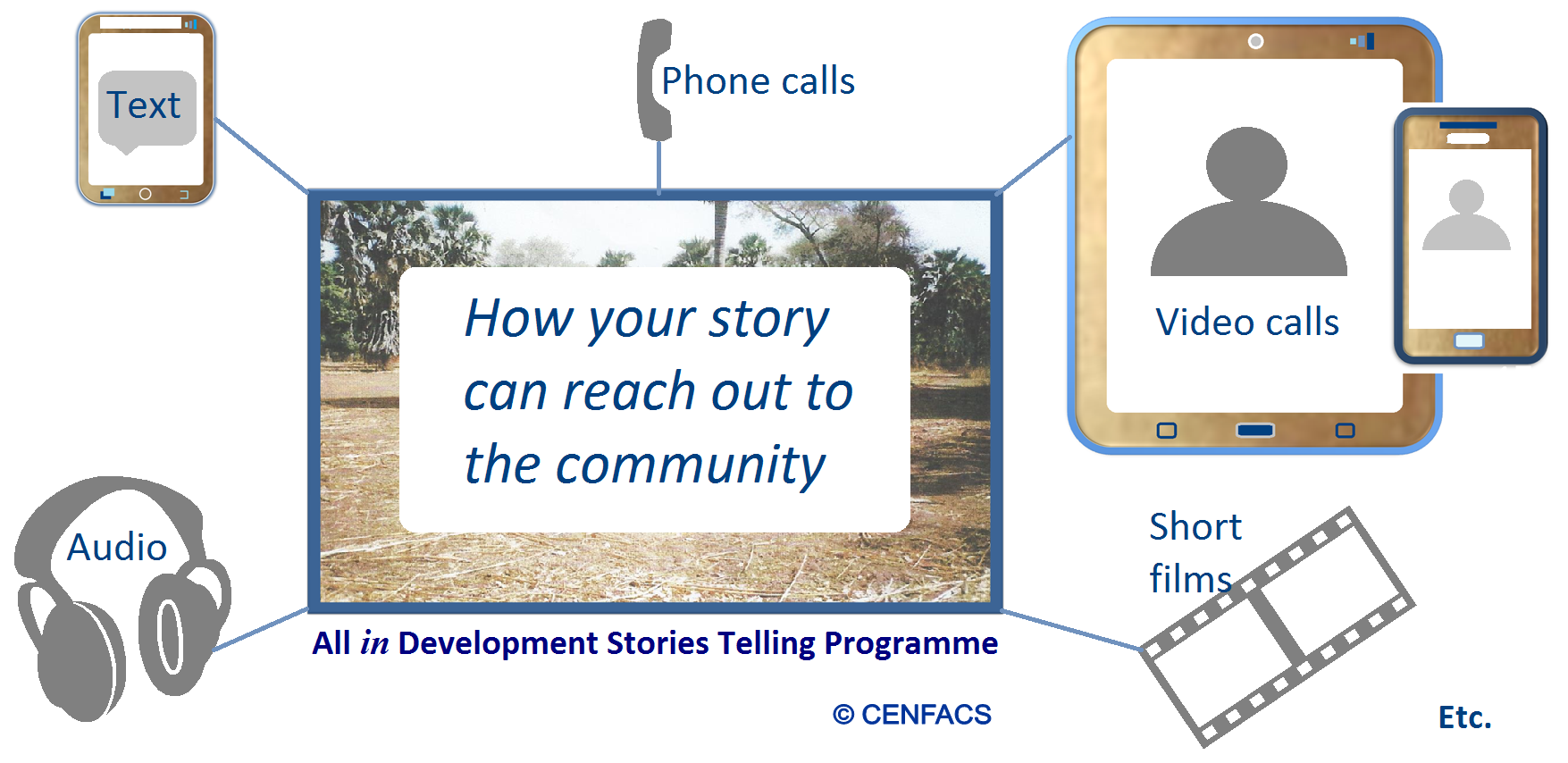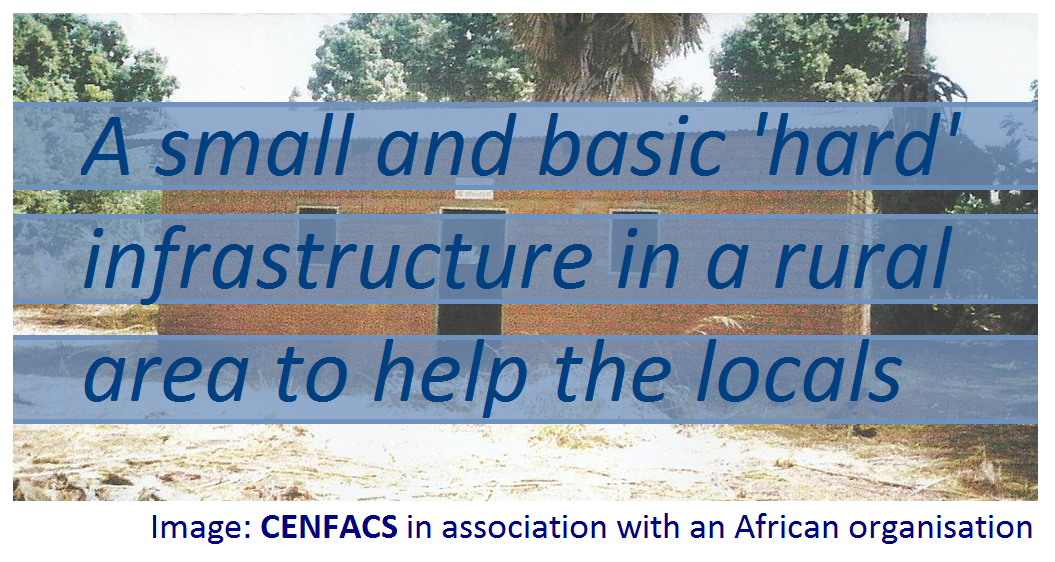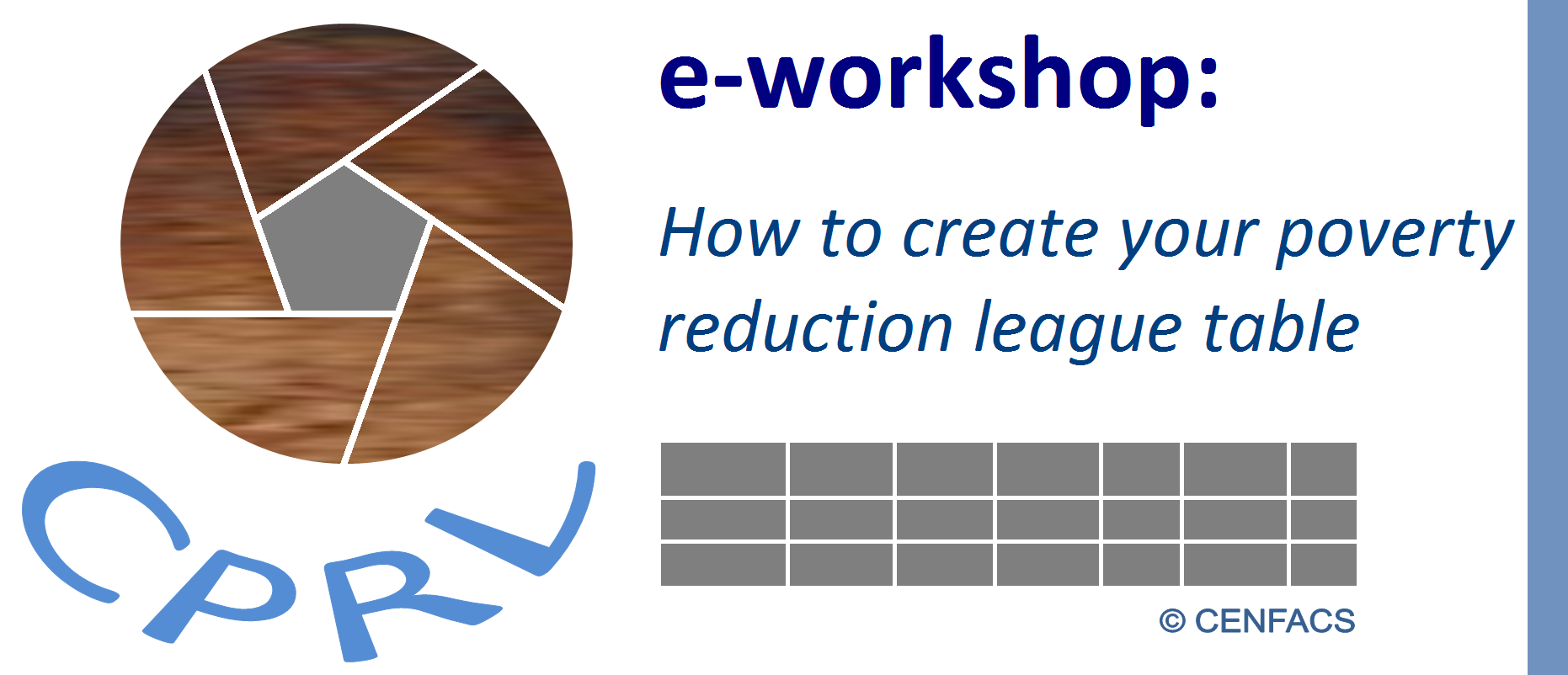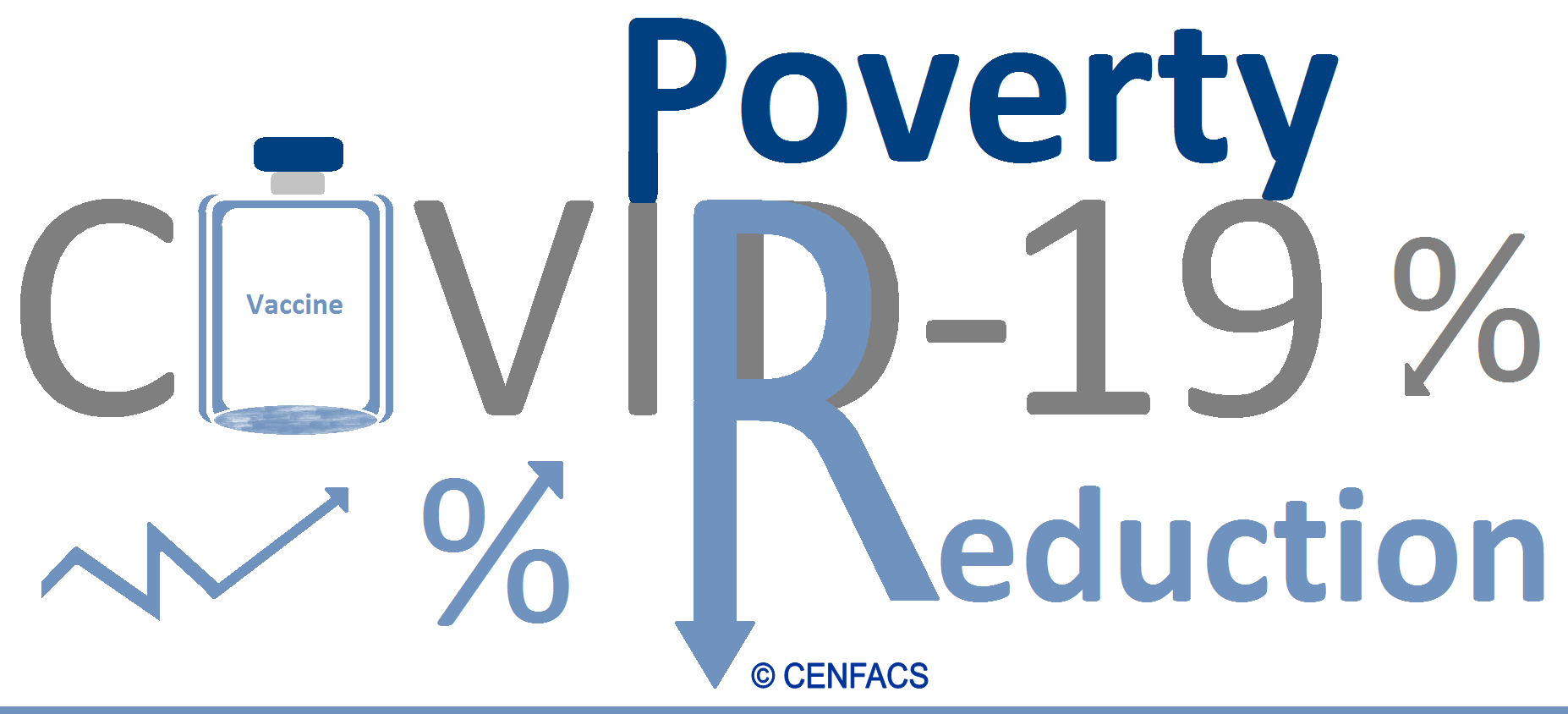Welcome to CENFACS’ Online Diary!
19 May 2021
Post No. 196
The Week’s Contents
• All in Development Stories Telling Serial 3 – In Focus from Wednesday 19/05/2021: Rehabilitation Stories
• Stories of Rehabilitation of Poverty Reduction Infrastructures in Africa
• Stories of Volunteers’ Actions across All the Recovery and Rehabilitation Fronts
…And much more!
Key Messages
• All in Development Stories Telling Serial 3 – In Focus from Wednesday 19/05/2021: Rehabilitation Stories
The lead message of this 196th post of CENFACS Blog is about the tales of helping people and communities in need to re-adapt to society and the economy after being adversely affected by the coronavirus disaster and associated containment measures (i.e. social distancing, lockdowns, travel restrictions and border control).
The accounts to be told; shared and learnt are those that falling within the scope of the process of building back better from the coronavirus and accidental damages caused by the COVID-19 containment measures. They are also the following level of stories after those of recovery that we called upon in the last post.
To continue the presentation of this first key message, let us stress this. The recovery stories presented in Serial 2 are/were those of individuals and/or communities trying to recover while the tales of rehabilitation in Serial 3 are those of systems that rehabilitate from the life-threatening and –destroying impacts of the coronavirus. However, within the rehabilitation literature, there are authors who speak about the rehabilitation of individuals as well. The Rehabilitation Stories we are asking for are those related to disaster risk reduction management.
Under the Main Development section of this post, we have provided more details about these Serial 3 stories.
• Stories of Rehabilitation of Poverty Reduction Infrastructures in Africa
Before speaking about these stories, let us clarify our understanding of infrastructure.
By infrastructure, we mean both soft and hard infrastructure. The United Nations Human Settlements Programme (1) defined it in 2011 in the following terms:
“In general, infrastructure can be categorised into ‘hard’ infrastructure and ‘soft’ infrastructure. The former refers to physical structures or facilities that support the society and economy… The latter refers to non-tangibles supporting the development and operation of hard infrastructure”. (p. 5)
From this definition of infrastructure, it is possible to check the state of poverty reduction infrastructures in Africa during and after the coronavirus disaster. Many of them may have been damaged by this unprecedented disaster.
Those who hold stories about any rehabilitation work on these infrastructures related to basic utilities (such as water supply, health centres, hospitals, schools, irrigation, sanitation, etc.) can tell and share them.
We would like as well to hear and share the rehabilitation stories of soft infrastructures for poverty reduction, such as information systems, knowledge bases, digital infrastructures, etc.
Both soft and hard infrastructures have been adversely affected by the coronavirus in Africa. We would like to hear the rehabilitation stories of these infrastructures.
• Stories of Volunteers’ Actions across All the Recovery and Rehabilitation Fronts
By definition, All in Development Stories are the stories from volunteers. To go back to these basics, we are considering the accounts of actions carried out by All in Development Volunteers in the areas of recovery and rehabilitation from the life-threatening and –destroying impacts of the coronavirus.
These stories could be related to actions generally taken in volunteering capacity to help people and communities in need to recover and rehabilitate from the coronavirus disaster and its side effects. They could be also actions in which a volunteer got specifically involved and at the fronts of both recovery and rehabilitation processes.
To tell, share and provide opportunity for learning development through your story of volunteers’ actions across all the fronts of recovery and rehabilitation, please contact CENFACS.
Extra Messages
• Stories of Environmental Rehabilitation in the Era of COVID-19
Since sustainable development is one of CENFACS’ specialities, we are as well calling for submission of stories of environmental rehabilitation. These are the tales of returning disturbed or disrupted natural sites to their original condition. They are the revelations of the rehabilitation process in dealing with environmental pollution as well.
For example, one can submit a story of returning habitat or ecosystem to its original condition.
During the coronavirus lockdowns, there have been many examples in terms of the way the environment has gained in conservation and protection. Likewise, during the easing of pandemic-related restrictions and the resumption of mobility for certain societies and economies, there could be interesting stories of rehabilitation that one can tell, share and provide opportunity for learning and development.
For instance, the 22nd of May 2021 is the International Day for Biological Diversity (IDB), which will be celebrated virtually. The slogan for the IDB on 22 May 2021 is: “We’re part of the solution”. To echo the IDB, CENFACS will be featuring or making a story of the African Biodiversity Hotspots, particularly the Peatlands of the Congo Basin. Through this featuring or story making, we shall as well look at if there is any story of rehabilitation relating to the Congo Basin Peat lands.
For those who have those stories of environmental rehabilitation during this time of the coronavirus pandemic, they can submit them to CENFACS.
• E-workshop for Gamers of CENFACS’ Poverty Reduction League: Create a League Table
How to create your African Countries’ League Table when gaming for poverty reduction
As part of CENFACS’ All Year Round Play Project (that is, CENFACS Poverty Reduction League), we can work together to support you (as a gamer) create your league table as you play. You can create a poverty reduction table showing the following:
√ Your selected African team countries
√ The number of criteria/indicators you can assess them against
√ The number of criteria/indicators any of them has passed
√ How many of them they average
√ How many of them they under-perform
√ How many of them they score against the opposition
√ How many of them they concede against the opposition
√ Points they earn or share for each game
By systematically and continuously recorded the results, scores and actions of your game fixtures via this table, you will in the end know which African country that would best reduce poverty by the end of 2021.
To access this e-workshop and get the grips with skills and techniques to create your poverty reduction league table, just contact CENFACS.
• Be.Africa Forum Discussion: Can Differences in COVID-19 Vaccination Rates Drive Divergent Poverty Reduction Rates in Africa?
There is a disagreement between those who think that differences in access to COVID-19 vaccines can lead to divergent paths in terms of poverty reduction in Africa and those who believe in the opposite.
You can make your contribution to this debate over access to COVID-19 vaccines by telling the forum what you think.
To tell and share your thoughts on the question, just contact CENFACS.
Main Development
• All in Development Stories Telling Serial 3 – In Focus from Wednesday 19/05/2021: Rehabilitation Stories
Before detailing the types of rehabilitation stories we are aiming for, let us explain the following: the selected definitions of rehabilitation for this Serial 3, rehabilitation as part of build back better programme, rehabilitate greener and cleaner, types of rehabilitation stories sought, rehabilitation stories tracking tools and ways of making your story to reach out to the CENFACS Community.
• • Selected definitions of rehabilitation
In order to help those who would like to give or donate stories, we have selected two definitions of rehabilitation which are as follows.
The first definition is from the United Nations General Assembly (2) which argued in 2016 that
“Rehabilitation is the restoration of basic services and facilities for the functioning of a community or a society affected by a disaster”
The second definition is from the World Health Organisation (3) which explains that
“Rehabilitation is a set of interventions designed to optimise functioning and reduce disability in individuals with health conditions in interaction with their environment”.
The first definition is related to the socio-economic situation in which people and community can find themselves in the aftermath of a disaster. The second definition features actions taken to help individuals from the health point of view.
Since we always argue that the coronavirus is an economic and health crisis, both definitions of rehabilitation would be our guiding principles for the creation of stories of rehabilitation from real life.
• • Rehabilitation as part of build back better programme
Rehabilitation here is part and parcel of build back better programme which CENFACS is pursuing in order to help people and communities to come out from the detrimental impacts of the coronavirus. Rehabilitation is thus a continuing and back-forward process that needs to be placed within the context of disaster risk reduction management theories and practices.
• • Rehabilitate greener and cleaner
In our request for stories, it would better for those submitting stories to make sure that their stories are of bringing back greener and cleaner. They are of environment-friendly (that is, they have a small or zero environmental impact) and reduce waste in the nature.
These could be the stories of lowering emissions of greenhouse gas, of reducing climate-damaging CO2 emissions, of spearheading green energy solutions and increasing the share of renewables in the energy mix in the process of rehabilitating lives.
• • Types of rehabilitation stories sought
The choice or selection of definition of rehabilitation can have some implications in terms of the stories one would like to give or donate. Depending on this choice or selection, it is possible to have the following stories of:
√ Enabling basic services and facilities to resume functioning
√ Assisting the victims’ self-help efforts to repair the damages caused by COVID-19
√ Revival of economic activities
√ Optimizing functioning in individuals who suffered from COVID-19 adverse impacts
√ Improving interactions between individuals suffering from COVID-19 led conditions and their environments
√ Addressing underlying conditions left by the coronavirus (e.g. health and economic pains)
√ Improving the way in which an individual functions in everyday life
√ Supporting individuals and communities to overcome difficulties with economic and health legacies of the coronavirus pandemic
The above are just an illustration of ways of developing, telling and sharing stories of bringing back lives to an original condition. There are many other ways of bringing back lives.
If anyone of you has them, they can share with CENFACS to steward All in Development Stories Telling and Sharing Programme.
• • How to make your stories to reach CENFACS and others in the community
There are many means or ways in which you can submit or donate your story. In the context of this Serial 3, there are ways that one can use to do it, which are:
• • • Written text options
You can write your story in a textual format. You can use email, mobile phone, text messing system and CENFACS’ contact form; and send your story in the form of text.
• • • Phone calls
You can call CENFACS and give your story via phone.
• • • Audio storytelling and listening
You can use the capacity of audio to tell your volunteering story. Audio storytelling (with short digital narratives, podcasting, social media and online streaming) can help create and share the impact of the change you made or have made.
• • • Short film experiences
You can make short films to support your storytelling experiences and create a social impact. You can make film on your smart phone with a video content. Shooting interviews with project participants can also help to create experiences that maximise social media and essential story contents.
• • • Video options
You can use audio High Definition video calling (for example Skype video calls or Google Meet for video conferencing options) to tell and share you story with CENFACS and others.
If you are going to use video options, it is better to use a free option and non-profit programme, as they are accessible to everybody to join in with at home or wherever they are, especially at this time of the coronavirus pandemic.
Some of our users and members may not be able to afford to pay for some types of video options on the market. That is why it is better to use something which is accessible by the majority of people.
For the purpose of data protection, please use the security tips attached to your chosen option.
If you know you are going to tell your story via video calling or conferencing option and you want CENFACS to participate or join in, you need to let us know at least three days before your story calling or conferencing start so that we can plan ourselves. You need as well to inform us about the date, time and possibly participants. You can email, phone, text or complete the contact form to let us know as we are busy like you.
If you have a story, you can tell and share with us and others via the above named means. And if you do not mind, we will circulate your stories within the CENFACS Community.
• • Rehabilitation stories tracking tools
To track the rehabilitation stories you are or will be telling and sharing with us, we have developed a certain number of tracking tools for monitoring and evaluation purposes. One of these tools is our AiDS (All in Development Stories) terms and conditions which we highlighted at the beginning of this programme. We strongly recommend to those who would like to submit their rehabilitation stories to consider this tracking tool.
If you have a story of green and sustainable rehabilitation from the COVID-19 disaster and associated adverse impacts, please do not hesitate to tell it to CENFACS.
_________
References
(1) The United Nations Human Settlements Programme (UN-HABITAT), 2011, Infrastructure for Economic Development and Poverty Reduction in Africa, Nairobi, Kenya (www.unhabitat.org)
(2) https://www.unisdr.org/files/53213_bbb.pdf, United Nations General Assembly 2016 (accessed May 2021)
(3) https://www.who.int/news-room/fact-sheets/detail/rehabilitation (accessed May 2021)
________
Help CENFACS keep the Poverty Relief work going this year.
We do our work on a very small budget and on a voluntary basis. Making a donation will show us you value our work and support CENFACS’ work, which is currently offered as a free service.
One could consider a recurring donation to CENFACS in the future.
Donate to support CENFACS!
FOR ONLY £1, YOU CAN SUPPORT CENFACS AND CENFACS’ PROJECTS, JUST GO TO http://cenfacs.org.uk/supporting-us/
Thank you for visiting CENFACS website and reading this post.
Thank you as well to those who made or make comments about our weekly posts.
We look forward to receiving your regular visits and continuing support throughout 2021 and beyond.
With many thanks.








